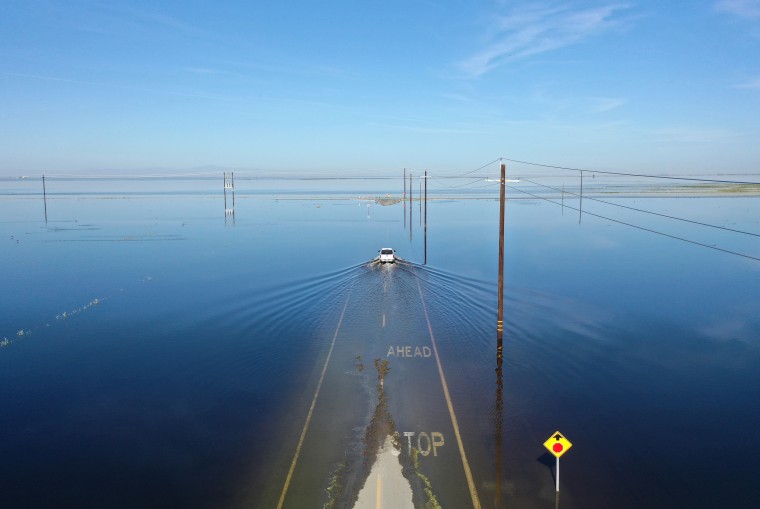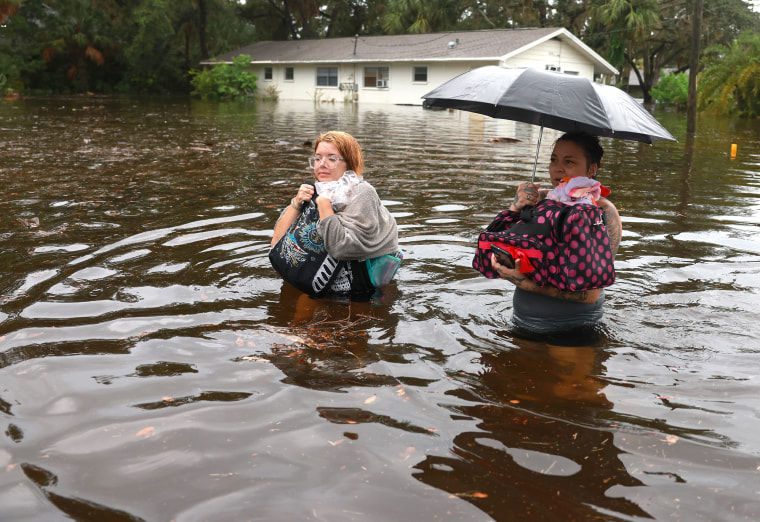The U.S. has had a record 25 weather disasters so far in 2023, each of which caused at least $1 billion in damage — and a new NASA analysis suggests the year’s extreme weather events may be far from over.
The National Oceanic and Atmospheric Administration on Wednesday released its monthly climate report, which included details of the country’s billion-dollar extreme weather events in the first 10 months of the year. With two months left in 2023, the 25 disasters tallied to date are already the most for any year since 1980, when NOAA started keeping such records.
This year’s major disasters included flooding events in the Northeast and in California, a deadly wildfire in Hawaii, Hurricane Idalia in August, a drought and heat wave event that gripped the South and Midwest, and a flurry of severe storms around the country.
In a separate report, NASA said parts of the U.S. could see an increase in flooding this winter if a strong El Niño develops. El Niño is a naturally occurring climate pattern characterized by warmer-than-usual waters in the eastern tropical Pacific Ocean. The phenomenon affects global temperatures, rainfall, hurricanes and severe storms, and typically drives climate anomalies and extremes.
If a strong El Niño develops this winter, NASA scientists said cities along the western coast could see an increase in the frequency of high-tide flooding that can turn roads into waterways and inundate low-lying structures.
So far in 2023, weather and climate disasters resulted in more than $73.8 billion in damage, according to NOAA officials. The 25 disasters over just 10 months far outpaces the previous record of 22 billion-dollar extreme weather events, set in 2020.

The bleak milestone is yet another in a year that has been chock-full of extremes.
An analysis conducted by the nonprofit organization Climate Central found that the past 12 months have been the hottest ever recorded, with global average temperatures from November 2022 through October being 1.32 degrees Celsius (2.4 degrees Fahrenheit) above preindustrial averages.
A separate report released Wednesday by Europe’s Copernicus Climate Change Service found that last month was the hottest October on record globally, marking the fifth-straight month this year with that dubious honor. Scientists now say the October record all but guarantees that 2023 will rank was the warmest year in recorded history.
Warm October temperatures and expanding drought in the lower Mississippi Valley drove water levels in parts of the Mississippi River to historic lows, according to NOAA.
The low water levels have had far-reaching consequences: from jeopardizing harvests across the Midwest to hampering shipping operations along the key waterway and affecting the availability of clean drinking water in southern Louisiana.

